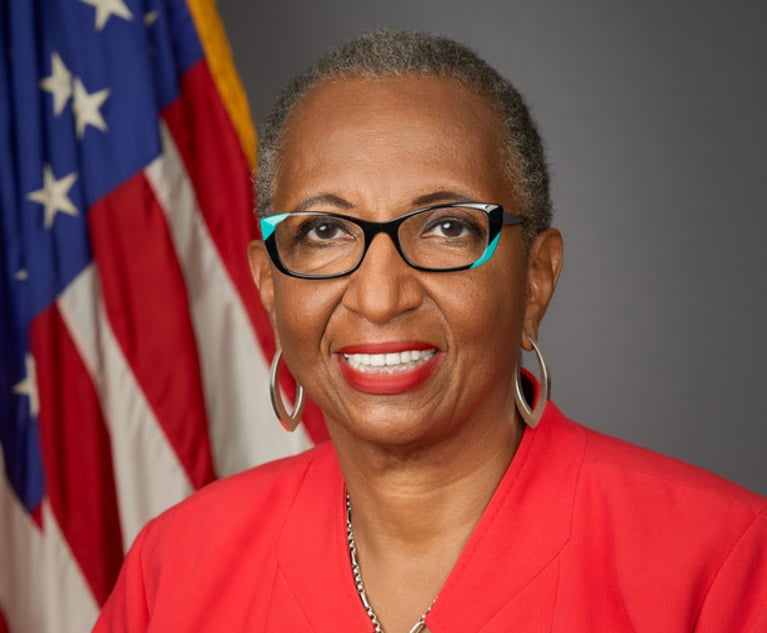IP: A reasonable royalty for patent infringement
Responding to increasingly large damages awards based on expert advice grounded more in speculation than fact, the Federal Circuit finally rejected the so-called 25 percent rule, a rule of thumb used in calculating a reasonable royalty.
October 25, 2011 at 05:00 AM
6 minute read
The original version of this story was published on Law.com
Responding to increasingly large damages awards based on expert advice grounded more in speculation than fact, the Federal Circuit finally rejected the so-called “25 percent rule,” a rule of thumb used in calculating a reasonable royalty.
The 25 percent rule allowed an expert to opine that the accused infringer would pay a royalty rate equivalent to 25 percent of its profit on the product practicing the patent at issue.
For many years, patent defendants faced an uphill battle against the 25 percent rule because the resulting royalty was often disproportionate to the actual economics of the alleged infringement.
The Federal Circuit changed all that in Uniloc USA, Inc. v. Microsoft Corp., 632 F. 3d 1292, 1315 (Fed. Cir. 2011), when it held “as a matter of Federal Circuit law that the 25 percent rule of thumb is a fundamentally flawed tool…. [and] is thus inadmissible under Daubert and the Federal Rules of Evidence, because it fails to tie a reasonable royalty base to the facts of the case at issue.”
Application of the 25 percent rule during trial in Uniloc highlighted just how speculative the “rule” could be. The patent involved a software registration system to deter copying, which was asserted against Microsoft's Product Activation feature.
The district court allowed the 25 percent rule to be presented at trial by Uniloc's expert, who opined that the royalty rate would be $2.50 for each product key sold by Microsoft, which, on average, cost $10 per key and evidently represented nearly 100% profit. The expert then “determined” that the royalty rate should not be adjusted based on other factors because “the factors in favor of Uniloc and Microsoft generally balanced out.”
As a result, the expert said $564 million was the correct damages figure. The jury proceeded to award somewhat less – “only” $388 million – and Microsoft appealed against use of the 25 percent rule.
Rejecting the 25 percent rule, courts returned to requiring the full-fledged “hypothetical modeling” approach outlined in Georgia-Pacific Corp. v. U.S. Plywood Corp., 318 F. Supp. 1116 (S.D.N.Y. 1970).
A hypothetical royalty negotiation is modeled between the potential licensee and the patent holder on the assumption that the patent is valid and infringed. The model first defines a bargaining range with the upper end of the range set by the largest amount the potential licensee would willingly pay, but the lower end is pegged to the minimum amount the patent holder can accept.
The model then considers multiple factors to determine where the hypothetical negotiators would strike a bargain within that range. If done correctly, the hypothetical negotiation results in a benefit for both sides instead of reaching no deal at all.
By tying the reasonable royalty to the facts of the case and considering a wide array of particular circumstances, it is expected a fairer outcome will result as compared to applying an arbitrary 25 percent rule.
Responding to increasingly large damages awards based on expert advice grounded more in speculation than fact, the Federal Circuit finally rejected the so-called “25 percent rule,” a rule of thumb used in calculating a reasonable royalty.
The 25 percent rule allowed an expert to opine that the accused infringer would pay a royalty rate equivalent to 25 percent of its profit on the product practicing the patent at issue.
For many years, patent defendants faced an uphill battle against the 25 percent rule because the resulting royalty was often disproportionate to the actual economics of the alleged infringement.
The Federal Circuit changed all that in
Application of the 25 percent rule during trial in Uniloc highlighted just how speculative the “rule” could be. The patent involved a software registration system to deter copying, which was asserted against
The district court allowed the 25 percent rule to be presented at trial by Uniloc's expert, who opined that the royalty rate would be $2.50 for each product key sold by
As a result, the expert said $564 million was the correct damages figure. The jury proceeded to award somewhat less – “only” $388 million – and
Rejecting the 25 percent rule, courts returned to requiring the full-fledged “hypothetical modeling” approach outlined in
A hypothetical royalty negotiation is modeled between the potential licensee and the patent holder on the assumption that the patent is valid and infringed. The model first defines a bargaining range with the upper end of the range set by the largest amount the potential licensee would willingly pay, but the lower end is pegged to the minimum amount the patent holder can accept.
The model then considers multiple factors to determine where the hypothetical negotiators would strike a bargain within that range. If done correctly, the hypothetical negotiation results in a benefit for both sides instead of reaching no deal at all.
By tying the reasonable royalty to the facts of the case and considering a wide array of particular circumstances, it is expected a fairer outcome will result as compared to applying an arbitrary 25 percent rule.
This content has been archived. It is available through our partners, LexisNexis® and Bloomberg Law.
To view this content, please continue to their sites.
Not a Lexis Subscriber?
Subscribe Now
Not a Bloomberg Law Subscriber?
Subscribe Now
NOT FOR REPRINT
© 2025 ALM Global, LLC, All Rights Reserved. Request academic re-use from www.copyright.com. All other uses, submit a request to [email protected]. For more information visit Asset & Logo Licensing.
You Might Like
View All
Trump Taps McKinsey CLO Pierre Gentin for Commerce Department GC

Fired NLRB Member Seeks Reinstatement, Challenges President's Removal Power

Upstart Insurer That's Wowing Industry Hires AIG Legal Exec to Help Guide Global Expansion
2 minute read
GOP-Led SEC Tightens Control Over Enforcement Investigations, Lawyers Say
Trending Stories
- 1Thursday Newspaper
- 2Public Notices/Calendars
- 3Judicial Ethics Opinion 24-117
- 4Rejuvenation of a Sharp Employer Non-Compete Tool: Delaware Supreme Court Reinvigorates the Employee Choice Doctrine
- 5Mastering Litigation in New York’s Commercial Division Part V, Leave It to the Experts: Expert Discovery in the New York Commercial Division
Who Got The Work
J. Brugh Lower of Gibbons has entered an appearance for industrial equipment supplier Devco Corporation in a pending trademark infringement lawsuit. The suit, accusing the defendant of selling knock-off Graco products, was filed Dec. 18 in New Jersey District Court by Rivkin Radler on behalf of Graco Inc. and Graco Minnesota. The case, assigned to U.S. District Judge Zahid N. Quraishi, is 3:24-cv-11294, Graco Inc. et al v. Devco Corporation.
Who Got The Work
Rebecca Maller-Stein and Kent A. Yalowitz of Arnold & Porter Kaye Scholer have entered their appearances for Hanaco Venture Capital and its executives, Lior Prosor and David Frankel, in a pending securities lawsuit. The action, filed on Dec. 24 in New York Southern District Court by Zell, Aron & Co. on behalf of Goldeneye Advisors, accuses the defendants of negligently and fraudulently managing the plaintiff's $1 million investment. The case, assigned to U.S. District Judge Vernon S. Broderick, is 1:24-cv-09918, Goldeneye Advisors, LLC v. Hanaco Venture Capital, Ltd. et al.
Who Got The Work
Attorneys from A&O Shearman has stepped in as defense counsel for Toronto-Dominion Bank and other defendants in a pending securities class action. The suit, filed Dec. 11 in New York Southern District Court by Bleichmar Fonti & Auld, accuses the defendants of concealing the bank's 'pervasive' deficiencies in regards to its compliance with the Bank Secrecy Act and the quality of its anti-money laundering controls. The case, assigned to U.S. District Judge Arun Subramanian, is 1:24-cv-09445, Gonzalez v. The Toronto-Dominion Bank et al.
Who Got The Work
Crown Castle International, a Pennsylvania company providing shared communications infrastructure, has turned to Luke D. Wolf of Gordon Rees Scully Mansukhani to fend off a pending breach-of-contract lawsuit. The court action, filed Nov. 25 in Michigan Eastern District Court by Hooper Hathaway PC on behalf of The Town Residences LLC, accuses Crown Castle of failing to transfer approximately $30,000 in utility payments from T-Mobile in breach of a roof-top lease and assignment agreement. The case, assigned to U.S. District Judge Susan K. Declercq, is 2:24-cv-13131, The Town Residences LLC v. T-Mobile US, Inc. et al.
Who Got The Work
Wilfred P. Coronato and Daniel M. Schwartz of McCarter & English have stepped in as defense counsel to Electrolux Home Products Inc. in a pending product liability lawsuit. The court action, filed Nov. 26 in New York Eastern District Court by Poulos Lopiccolo PC and Nagel Rice LLP on behalf of David Stern, alleges that the defendant's refrigerators’ drawers and shelving repeatedly break and fall apart within months after purchase. The case, assigned to U.S. District Judge Joan M. Azrack, is 2:24-cv-08204, Stern v. Electrolux Home Products, Inc.
Featured Firms
Law Offices of Gary Martin Hays & Associates, P.C.
(470) 294-1674
Law Offices of Mark E. Salomone
(857) 444-6468
Smith & Hassler
(713) 739-1250






